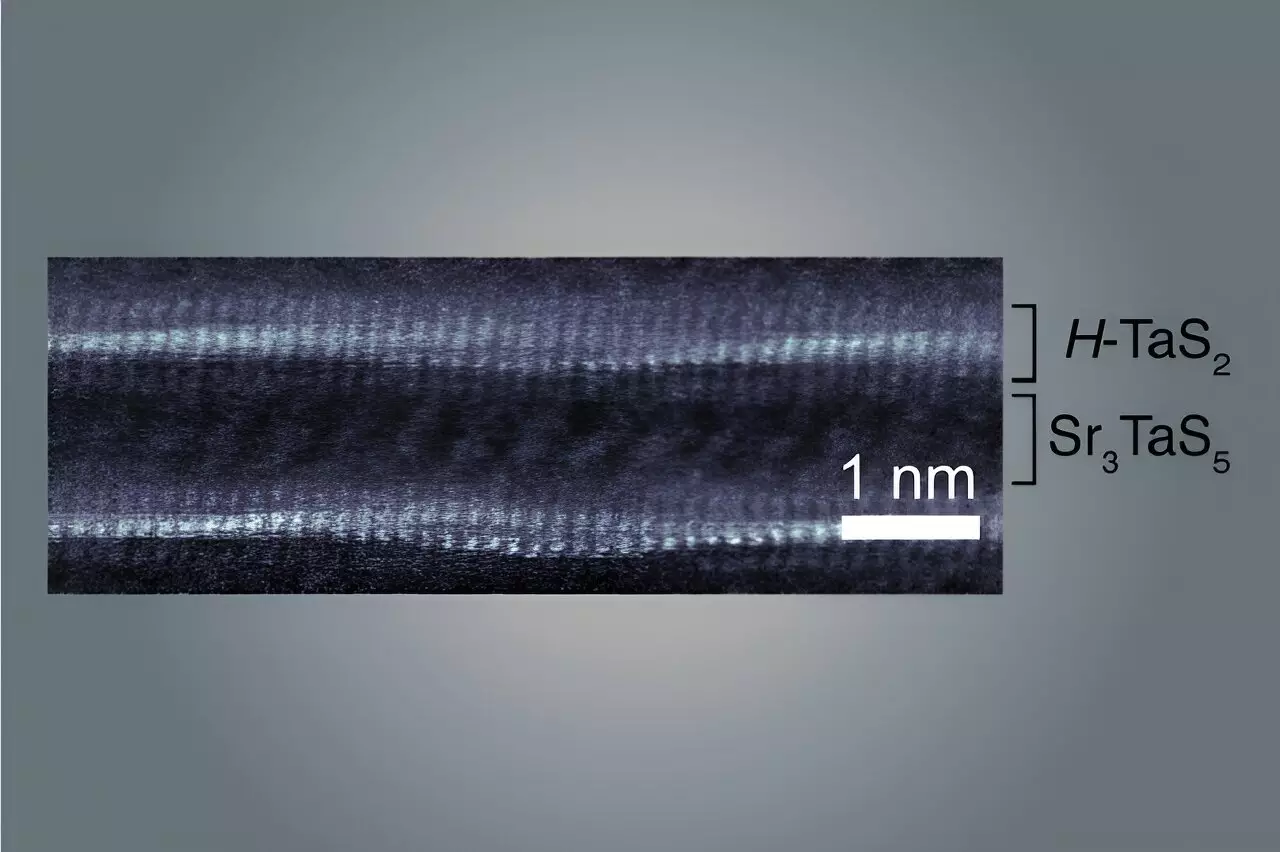In the realm of materials science, the intersection of atomic precision and macroscopic manipulation represents a significant frontier. Researchers at the Massachusetts Institute of Technology (MIT) have made a remarkable breakthrough by developing a novel material that exhibits rare superconducting and metallic characteristics. This innovation is rooted in the precise arrangement of atomic structures that create repetitive wave-like layers, each only a nanometer thick. This characteristic not only enhances our understanding of quantum phenomena but also paves the way for future advancements in the field.
The Science Behind the Waves
The synthesis of this new material is a result of meticulous rational design. The MIT team leveraged their extensive knowledge of chemistry and material science, enabling them to formulate a unique recipe for creating this compound. Unlike traditional crystal structures, this material’s layers are not uniform—rather, they exhibit a deliberate waviness. This deviation is crucial; its origin lies in a mismatch in the dimensions of adjacent layers. This structural anomaly can be likened to trying to place two sheets of paper of differing sizes on top of one another— adjustments must be made leading to unique bends and waves in the material.
The new compound consists of alternating layers of tantalum and sulfur combined with ‘spacer’ layers made of strontium, tantalum, and sulfur. By observing how these layers interact at the atomic level, researchers were able to unravel the mystery surrounding their behavior. Each wave within the layers influences how electrons move through them, creating a tailored path that enhances their conductivity, making it easier for electrons to travel along the valleys formed by these waves.
One of the most intriguing properties exhibited by this material is its ability to become superconductive under certain temperature conditions, allowing electrons to flow without resistance. This phenomenon is not merely a byproduct of its composition but a direct consequence of the structural modulation introduced by the waves. The varying intensity of the waves in different regions of the material creates an intricate landscape for the electrons to navigate, resulting in diverse conductivity levels. This ‘directionality’ not only elevates the material’s efficiency but also encourages further exploration into how engineered structures can manipulate quantum states—key to developing advanced electronic devices and quantum computers.
A significant advancement resulting from this research is the ability to produce macroscopic samples of these nanostructured materials. Traditional methods of creating two-dimensional materials often require tedious manual assembly; however, the MIT team’s approach simplifies the process. By mixing material powders and employing controlled heating to facilitate chemical reactions, they can naturally form large crystals that can be handled easily. This scalability is a game-changer for researchers, making it practical to conduct experiments that analyze the material’s quantum behavior in a tangible form.
Aravind Devarakonda, a lead author of the study, envisions great potential for applying this novel material. This work not only reinforces the principles of rational design in materials science but also suggests that many properties previously thought to be unique to smaller structures might be replicated and exploited on a larger scale.
This breakthrough in fabricating 2D wavy materials has significant implications for future research. The findings published in the journal Nature signal a new frontier in material exploration, as researchers have only begun to scratch the surface of what properties these new materials can exhibit. The uniformity of the wavy layers across the entire crystal is believed to possess the most ideal characteristics observed in comparable materials, prompting researchers to believe that this could be only the beginning.
The potential applications for these materials are vast, transcending traditional boundaries of superconductivity and magnetism. As highlighted by Joseph Checkelsky, a senior investigator on the project, this innovation could lead to the discovery of entirely new physical properties that enhance our understanding of quantum systems and could eventually revolutionize our technology.
The creation of this unique new material at MIT represents a pivotal moment in material science. Through innovative design and advanced synthesis techniques, researchers have unearthed a promising avenue for future discoveries that could dramatically reshape our technological landscape. This achievement exemplifies the essence of scientific curiosity and collaboration, showcasing how a dedicated approach to understanding atomic interactions can produce groundbreaking results. As this field continues to develop, we may find ourselves on the brink of a new era in materials engineering, one ripe with opportunity and potential surprises.

